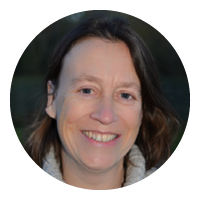Nicola Carslaw
University of York
- Conference: Air Quality Conference
- Presentation: INDAIRPOLLNET: Driving indoor air pollution research in Europe
- Presentation Time: Day1 12:20


Nicola Carslaw has worked in the field of air pollution since 1996 and has ~70 papers that cover her research in outdoor atmospheric radical measurements, detailed chemical modelling studies in support of ambient field campaigns and on indoor air chemistry modelling. Her research has driven experimental and field campaign design and predicted and explained indoor air quality following cleaning, emissions from materials, and breath and skin emissions from people. Her indoor air chemistry model has been developed over the last 15 years and is widely regarded as world-leading and she is recognised as an international leader in the field of indoor air chemistry. As well as leading more than 200 scientists in the EU COST Action INDAIRPOLLNET, she is a member of the UK Department of Health’s Committee on the Medical Effects of Air Pollution (COMEAP), and a member of the Royal College of Paediatrics and Child Health and Royal College of Physicians Working Group investigating The Effects of Indoor Air Quality on Children and Young People's Health Across the Lifecourse.
This presentation will describe some of the key findings from a European network for indoor air quality: INDAIRPOLLNET (INDoor AIR POLLution NETwork https://indairpollnet.eu/). INDAIRPOLLNET has been running since September 2018, and has more than 200 indoor and outdoor air quality scientists from universities, large and small companies and research institutes around Europe and beyond. Their expertise covers chemistry, biology, standardisation, household energy, particulate matter characterisation, toxicology, exposure assessment, air cleaning, building materials (including those manufactured specifically to improve IAQ such as bio-based composites and green materials), building physics and engineering (including ventilation and energy) and building design. The aim of our network is to better understand indoor air quality to provide healthier buildings for the future, through designing a blueprint for a future indoor air field campaign. We are considering what air pollutant species we should measure indoors, how to measure them and in what sort of buildings, to make our results as representative as possible.